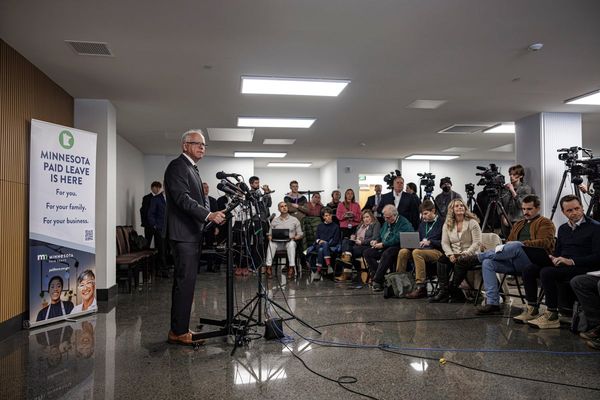
With its tree-lined gardens and vintage teak houses, The Siam is the perfect retreat
Even Bangkok’s most ardent admirers will admit that the city can be an intense experience. At times, all 11 million residents of the Thai capital seem to be on the streets at once, enjoying the boisterous markets and street cafes – or trying to get from one to another in cars, taxis and tuk-tuks.
In a place with this much going on, there’s value in retreat as well as immersion. Having toured the temples, feasted on Michelin-starred food and tried out the high-rise bars, you will be ready for a lazy cruise along the river to where your hotel awaits. Stately and secluded in its three-acre gardens, The Siam is the perfect sanctuary in this most energetic of destinations.

Why stay at The Siam?
For a hotel with just 38 suites, The Siam has quite a presence. In fact it feels like three hotels in one, each with its own architectural style and character. Down by the jetty, the mood is beach-club casual, with drinks and bar snacks to fuel a day on the lawn by the pool – or on the deck over the water watching the boats go by.
- SEE MORE Reviewed: 15 of the best hotels and resorts in Thailand
- SEE MORE 30 of the best luxury hotels to book in 2023
- SEE MORE Thailand’s island getaways: wildlife, wellbeing and wonderful food
Take a few steps inland and you’re in another world entirely. The red-brick path passes under a canopy of frangipani trees to Connie’s Cottage, an antique teak house shipped downriver and erected there a century ago by curio collector Connie Mangskau and her friend Jim Thompson, an American silk merchant (and spy: he worked for the predecessor to the CIA). Mangskau, a celebrated socialite, brought some of the biggest names of the 20th century to this unlikely spot, among them John Rockefeller, Henry Ford and Jackie Kennedy. Today, the cottage serves as an art gallery and boutique sales room for the fabrics and furnishings produced by the company Thompson founded.
A little further inland is the hotel’s main buildings, arranged around two airy Spanish-revival courtyards. Though they were built less than 20 years ago, they derive a sense of history from the antiques and curios lining their colonnades – a legacy of Mangskau and Thompson, and their eye for a striking artefact. The collection spans two millennia, from a Han Dynasty terracotta sculpture of a horse and carriage, dating from 206BC, to a handwritten note from Ian Fleming, who reputedly dined with a yakuza gang boss during his sojourn at Connie’s Cottage.

The reflecting pool in one courtyard, and the copious greenery inside and out, feels distinctly southeast Asian, but there are art-deco flourishes too: white tiles, for example, and tall, black-framed windows. The 1920s aesthetic extends into the guest rooms, where purple velvet sofas stand alongside antique writing desks and freestanding wardrobes.
Most of the rooms can be found in the main building, where the smallest suite is a generous 80 square metres, with high ceilings that add to the sense of space. Premier suites come with an extra 20 square metres, and truly enormous bathrooms. The Siam’s villas, which are distributed throughout the gardens, are even larger. All come with their own pools and some also have a view of the river.

What to do
One perk of staying at The Siam is the free river shuttle, which slips through the centre of the city, sparing you many hours in traffic. Tha Chang pier, a 20-minute cruise from the hotel, is a good first stop. From the jetty, it’s a five-minute walk to the Grand Palace, an exuberant collection of royal and religious architecture. The highlight is a two-kilometre-long mural which retells the Hindu sacred text from a Buddhist perspective. A glorious cosmic comic strip, it has enough spectacle (and flying monkeys) to entertain the most secular of visitors.

Holden Frith
From the palace you can walk out of the broad avenues of the royal district and into the narrower, busier streets and alleyways dedicated to commerce. The flower market is as bright and fragrant as you would expect, but the halls selling groceries are not far behind. Their pristine pyramids of chillies, lemongrass and galangal perfume the air and attract a constant stream of shoppers seeking out the freshest produce.
For purchases on an entirely different scale, you can stay on the shuttle boat for another couple of stops, alighting at IconSiam. The vast complex incorporates restaurants, residences and art exhibitions, but luxury shopping is where its heart lies. This district is also home to an alluring combination of luxury hotels and high-rises, making it the place to come for rooftop dining. Sky Bar, 820 feet above street level, is perhaps the most spectacular.
What to eat
The Siam has two excellent restaurants, one Thai and one international. Chon, the local option, is the more informal, spilling out of its teak houses into the riverside gardens and sharing tables with the cocktail bar – an ideal spot for pre-dinner sundowners. The food is a mixture of the familiar (green chicken curry, pad Thai noodles, tom kha gai soup) and the adventurous (pla muek yang, a chargrilled octopus tentacle with fiery nam jim sauce and crisped garlic). Chon is also the venue for breakfast, a deliciously diverse à la carte affair, ranging from fruit and pastries to indulgent truffle-infused cheese toasties and a tiger prawn hash.
The Story House, the hotel’s flagship restaurant, occupies an airy, high-ceilinged room along one side of a courtyard. With dark wood, white linen and a collection of ancient-looking statues on plinths, it’s a stylish setting for a menu that matches global classics with the best southeast Asian ingredients. Gnocchi with a ragout of prawns, chorizo and saffron, for example, or lamb cutlets with smoked aubergine, harissa and black garlic.

Beyond The Siam, Bangkok is one of the world’s great foodie cities, with treats to suit all palettes – and budgets. The area around Thewes Pier, a few streets away, is a good place to go for cheap, tasty bites, either at restaurants like No. 1 Mu Kratha, which is popular with students from the neighbouring university, to the large variety of street carts and stands. World-class restaurants worth a longer ride include Michelin-starred Nahm, which specialises in the food of rural Thailand, and Sorn, with two stars and countless other accolades for its culinary tour of the country’s deep south.
When to go
Bangkok is hot all year, with average highs ranging from 32C in December and January to 35C in April and May. Peak season for visitors runs from November to April, when rainfall and humidity are at their lowest. Songkran, the Thai new year, is celebrated on 9 April, and for up to a week afterwards, with parades and water fights.
How to get there
Thai Airways flies direct from London to Bangkok for about £770 return. Flights via Guangzhou on China Southern are available from £446 return.
Holden Frith was a guest of The Siam. Room rates start from £440 per night including breakfast. 3/2 Thanon Khao, Vachirapayabal, Dusit, Bangkok 10300, Thailand; thesiamhotel.com








